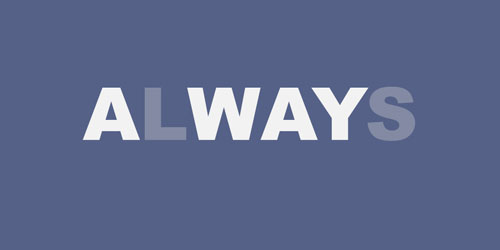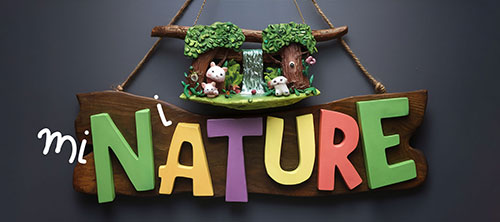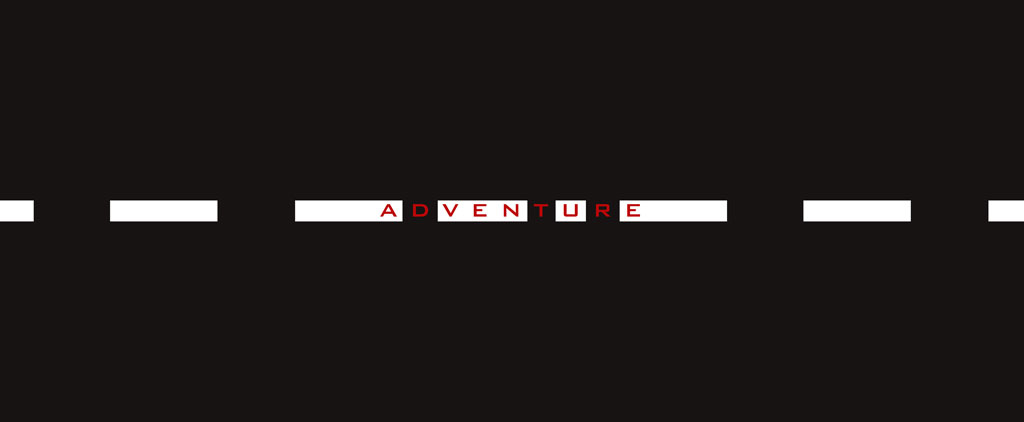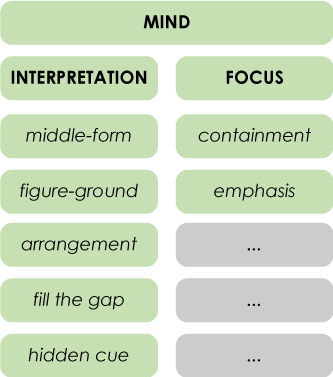Hello my friend, I’m glad to see you again.
Me too V. What’s up?
Everything’s good. In this chapter, we’re having a quiet chat, you and I, side by side, exploring the hidden layers of a new mind ambigram together.
Oh, that’s great! Can you tell me more?
Of course, here’s the mind category map again.
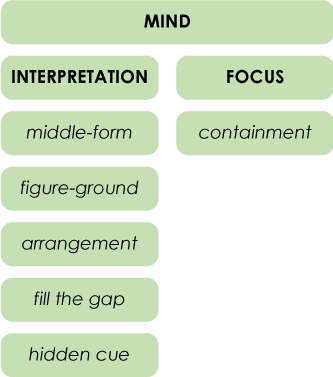
You see that right column? It seems almost empty. There must be something else there.
It feels like containment ambigrams want company.
They do. Let’s take a quick look at some containment ambigrams again, to refresh our memory.
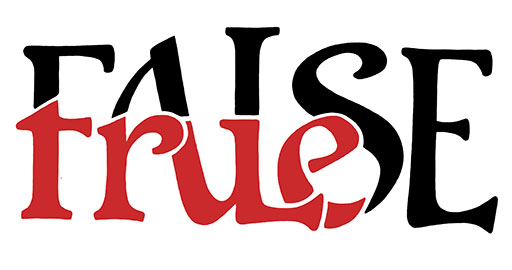
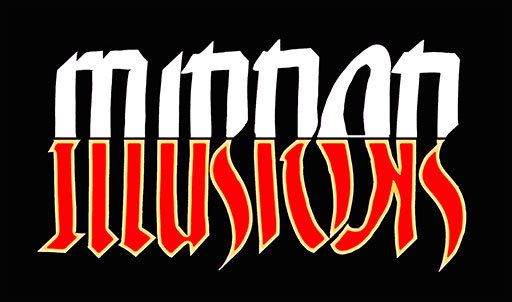
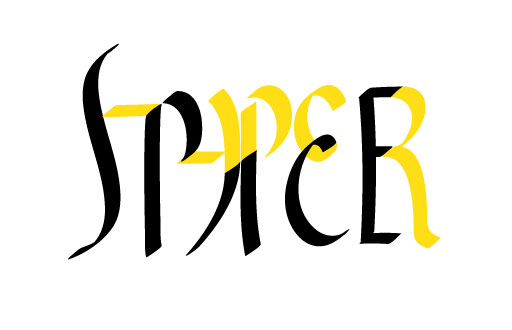
Excellent! I remember those.
Now, here’s what happens in a containment ambigram. The viewer focuses on some part(s) of the image. In the “true-false” piece by Scott Kim, it’s the bottom-left part. In the “mirror illusions” by Jeffry Manansala, it’s the entire bottom half. In “hyper-space” by Otto Kronstedt, it’s parts of the letters here and there.
In containment ambigrams, the smaller focus area forms another word. And this is done because the artist has meticulously crafted the letterforms so that specific segments or shapes can be visually isolated or “filtered” by the viewer in order to see a completely different word.
That’s right. Now how do we find another type of focus ambigram?
Think. We must find another way of ‘focusing’ on the typographic piece that differs from the one described above. Can you think of any?
I don’t think so. Containment ambigrams cover the whole range of possible parts. As we said, the second word can be just the bottom part of the first word, or the upper-right part, or even multiple parts of it. What else could there be?
It seems that there is something more. Something so simple, so obvious, that we miss it.
What is it?
I’m going to give you an example. What do you read here?

Parent.
That’s right. Now what you read here?

Well, I read ‘parent’, but I also read ‘art’.
Perfect! Now what do you read here?
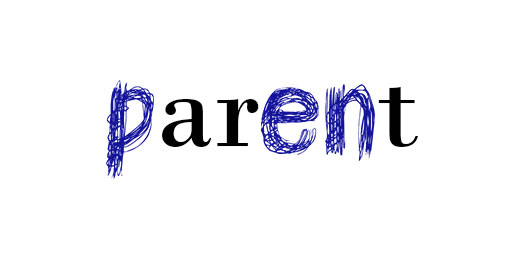
‘Parent’ and ‘pen’. And also ‘art’ in the black letters. But mostly ‘pen’. Is this an ambigram?
What do you think? Is it?
It doesn’t seem so. I mean, in this example, it’s obvious that the words ‘art’ or ‘pen’ are included in some sense in the word ‘parent’, no?
When I first showed you this image, what did you tell me you read?

Parent.
When did you notice the words ‘art’ and ‘pen’?
When you highlighted those specific letters.
That’s correct, my friend. I manipulated some letterforms and used colour to lead you to read the second word(s). Now, do you remember what an ambigram is?
A typographic piece of art that has at least two ways of being read.
Wonderful! Do you remember the ambigram criteria that if answered positively, we can say for sure that a piece is indeed an ambigram? You can look here if you missed this part.
Criterion 1: Is this a typographic piece of art? And criterion 2: Does it have at least two ways of being read?
You have an excellent memory my friend! It’s simple. We repeat the definition, reversing it to a question. Now I shall ask you, is this a typographic piece of art?

Yes, not a great one, but yes.
We won’t discuss my graphic abilities right now, nor the relationship between the two words. This is just an example. Now, does it have at least two ways of being read?
Yes, ‘parent’ and ‘art’.
So is it an ambigram?
Yes.
Nice. Thank you. See you in the next chapter.
Wait, what? But it’s not so wonderful. I mean, it fulfils the ambigram criteria, but it doesn’t feel like it’s really an ambigram, you know what I mean?
I get exactly what you’re trying to say. This is because this type of ambigram is a linguistic ambigram. We discussed these during our coffee break. Read again here. Which means that it’s an ambigram centered around the careful selection of the word/phrase.
Where the second word is smaller and uses just parts of the first bigger word?
That’s almost correct. It does not use parts of the first word, it uses distinct letters of the first word. And this is what differentiates this type from the containment ambigrams.
Also, notice that in this example, I lead you to read ‘art’ or ‘pen’ as the second word, but I could also lead you to read ‘pet’, or ‘part’, or ‘ant’, or ‘pan’, or ‘rent’ etc. It’s something that it’s there, but only when the specific letters are emphasized, the second word gets noticed.
So, what is its name?
Let’s give a round of applause to…










